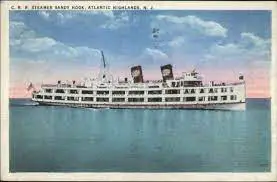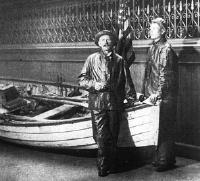The story of a knight, a maiden, and a dragon has all the makings of a fairy tale, but of course the most famous dragon-slaying tale is the legend of St. George.
The story was popular in the Middle East and it was picked up by the Crusaders when they went out to that part of the world.
Ever since St. George has been associated with Knights and chivalry.
He is patron saint of England where his popularity has revived recently, but he is shared with many other countries and cities around the world. In England, St. George’s day is April 23rd. In Eastern Europe he is usually celebrated on May 6th.
This is an adaptation from the Lives of the Saints – with a slight change to the ending. In the original, St. George (a Roman soldier) forces the townspeople to convert to Christianity before he kills the dragon. He later went on to become a Bishop and a martyr.
George stands for courage, and chivalry. Chivalry is the code of honor which knights in armor used to follow. They had to swear to be brave, fair, true to their word, and to protect the weak and the poor. Of course not all knights kept the code – but St. George did.
The red cross of St. George is on the British flag. In England, his feast day is April 23 and he is also the patron saint of Canada, China, Greece, Russia, Portugal, Palestine, Ethiopia, Serbia, and Montenegro. And one country is even named after him – and that’s the Georgia which is situated between Russia and Turkey.
He is often painted as a knight in armor from the Middle Ages, but was in fact born long before those times, when the Romans still ruled much of the world.
In the time of the Roman Empire, 1700 years ago, just outside the City of Cyrene in North Africa – a dragon lived in a stagnant, smelly pond. And whenever the dragon breathed on a person or an animal, they died on the spot. At first the dragon breathed on all the sheep that lived in the fields around the city. Then he started to attack the people, and threatened to kill them one and all.
The people of Cyrene had no choice but to come to terms with the dragon. They agreed to give him one person every month, so long as he left the others alone and unharmed for the rest of the time. But how were they to decide which person to sacrifice?
The king decreed that the names of every citizen should be scratched onto pieces of pottery, and kept in a great urn. Each month, one of the names would be drawn out of the urn, and that person would be given to the dragon. In this way men and women, both rich and poor, were chosen to be fed to the evil beast.
Then one day the name of the princess was shaken out of the urn. According to the King’s own law, his daughter must be sacrificed. He called the people together and offered them gold and treasure if only they would agree to spare her from the dragon. The judges who oversaw the lottery said that it must be completely fair, or else the people would no longer accept it. And so, much saddened, the king said to the princess: “My dear, I shall never see your wedding day.”
A week went past, and the day arrived when she must meet her fate. The palace servants dressed her in her wedding gown and placed a crown of flowers on her head. They led her out of the city in a procession, and headed for the lake where the dragon lived.
As they were on their way, a Roman soldier came riding up to the city. His name was George and he was a Christian from Cappadocia in Turkey. George stopped and asked why such a beautiful young woman was looking so sad on her wedding day. A citizen replied:
“Because according to the law she must this day marry the dragon who lives in that lake, and her wedding gift shall be death.”
George immediately replied: “If that really be the case, then let me slay the dragon.”
The citizens warned him that nobody stood a fighting chance against such as ferocious, plague-breathing lizard, but George was determined to save the princess.
The people tied her to a tree by the lake, and left her to meet her fate. George saw the dragon emerge out of the swampy waters, and he charged up on his horse and flung his spear into its shoulder. The dragon let out a piercing shriek.
It was wounded but not fatally.
While it was writhing in pain, George managed to cut the princess free from her bonds. The dragon was enraged and bounded his attacker. George retreated and called out to the princess to take off the belt from around her waist and to throw it at the dragon. This she did, and by a miracle, the belt wrapped itself round the dragon’s neck like a collar. Immediately the dragon became as peaceful as a lamb, and the princess was able to lead it by her belt back to the City.
When the people saw the princess and George leading the dragon back to their walls, they became angry and afraid, until St. George drew out his sword and slew the dragon, Then the people knew that from then on they could live safe and unharmed










